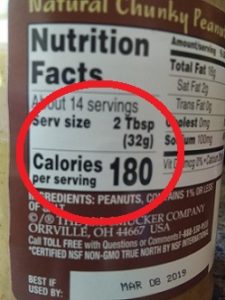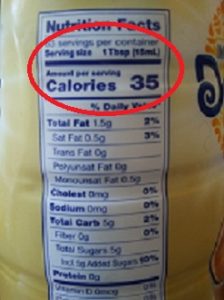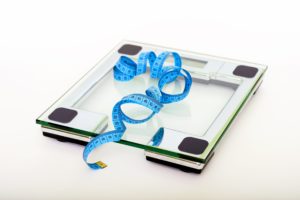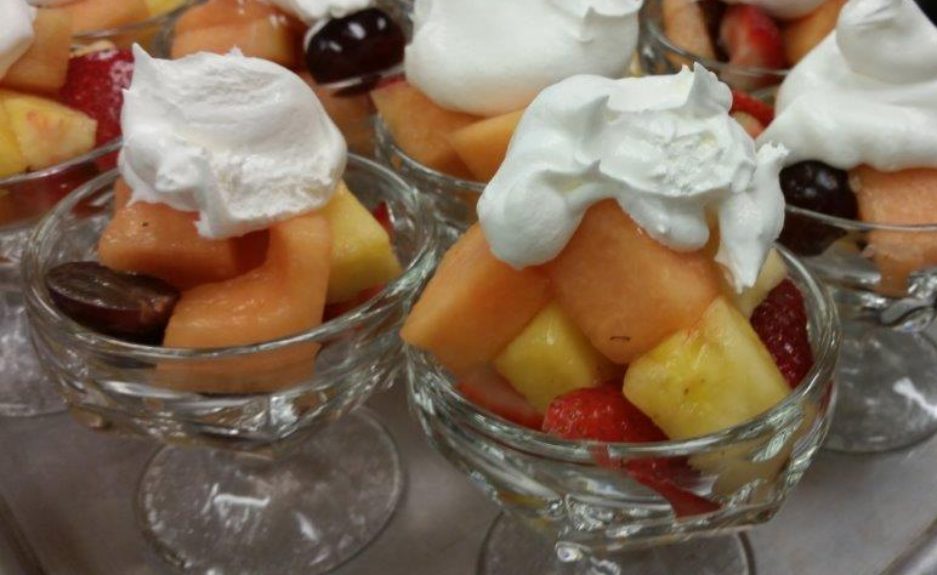I have a lot of topics I want to cover, but “how to lose weight” seems to be one of the most popular issues people talk to me about. I thought I’d jump right in and go over some tips for safe & effective strategies.
Keep in mind, there are different stages of weight loss that people are going through. Maybe you’re just starting your journey. Maybe you only have a few extra pounds hanging on for dear life. Maybe you’ve hit the infamous “plateau”…. the arch nemesis of dieters since the beginning of time. This particular blog is going to address how to lose weight if you’re just starting out and have more than 20 pounds to lose.
I think the most daunting question that haunts new beginnings of any journey, is “where do I start?” Unfortunately, there isn’t a one-answer-fits-all response. EVERYONE has a different, personal, starting place. My suggestion to steer you in the right direction is something called a food diary. This is a really popular, and incredibly effective tool that nutrition professionals use to gather data to make their suggestions. It’s exactly what it sounds like! You keep a diary and write down the food you ate, and how much of it you ate, throughout the day. Everything! You can’t get a good idea of where extra calories are coming from if you cheat on this project. There are so many times we get super busy and it feels like we haven’t eaten anything…. but those tiny snacks and drinks we grab on the go are often PACKED with more calories than we think, and many times, more than we need. Try and do this for a minimum of 3 days. If you can do it longer, you should! You want to be able to see patterns. It’s hard to pick apart problem areas when we’re used to our own routines. But when you see everything condensed for the day, you start to get a better understanding of what your diet really looks like. It makes it easier to find that starting point when you’re making a plan and learning how to lose weight.
Now… if the very idea of carrying around a notebook to write things down all day cripples your soul and tramples all over your newfound motivation… you’re not alone! Guess what? There are apps that will do this for you! The most popular is MyFitnessPal. I use this STILL, DAILY… and I love it! There’s even an option for mobile apps to scan bar codes and it will automatically upload the nutrition information for that food!! How easy, right? Two others I know of are: Sparkpeople, and FatSecret.
So now that you have days of food information staring at you, what do you do with it? How do you know what the problem areas even are? How does any of it help you learn how to lose weight? I’m going to give you 4 different areas to try and rein in all that data you’ve been collecting.
1. PORTION CONTROL
You want to know what a portion size is, & you want to know how to figure that out from the nutrition label. We live in a world where getting more for less is necessary for budgeting! But when you have more available, it doesn’t mean you should always put more on your plate. There are specific measurements for portion sizes for each of the different food groups. If you’re just starting out, that may be a good second step that I’ll get into on another blog. For now, lets just talk about that very top portion of the nutrition label & how it tells you how much you’re eating.

This is a label from a box of whole wheat elbow pasta. It says a serving size of this food is only a 1/2 cup of pasta. The calories in that serving are 210 calories.

What about this one? This label is from a jar of peanut butter. You might have heard some pretty great things about peanut butter! It contains protein, it has fiber… and it also has the heart healthy fats everyone talks about! What a perfect food, right??! Well, yeah… it does have all that great nutrition! It’s also a very high calorie food. Look at the serving size. That label is telling us that in 2 tablespoons of peanut butter there are 180 calories. Just think how fast that adds up if you’re not paying attention!
Let’s check out one more.
 I find that iced coffee and flavored creamers are everywhere! This nutrition label tells us there are 35 calories in one serving of flavored creamer. Not too bad, right? What else does it tell you though? One serving = 1 tablespoon! It’s pretty unlikely that anyone is using just 1 tbsp. So add that up…. do you use 3? 4? more? Do you have multiple cups of coffee everyday? I often hear people tell me they don’t understand why they can’t lose weight when they mostly just drink coffee all day. When I hear that… it really sounds like they’re eating nothing! But if you do the math… it’s a lot easier to drink your calories away and not realize it because you never feel full at the end.
I find that iced coffee and flavored creamers are everywhere! This nutrition label tells us there are 35 calories in one serving of flavored creamer. Not too bad, right? What else does it tell you though? One serving = 1 tablespoon! It’s pretty unlikely that anyone is using just 1 tbsp. So add that up…. do you use 3? 4? more? Do you have multiple cups of coffee everyday? I often hear people tell me they don’t understand why they can’t lose weight when they mostly just drink coffee all day. When I hear that… it really sounds like they’re eating nothing! But if you do the math… it’s a lot easier to drink your calories away and not realize it because you never feel full at the end.
The point I want you to take away from this is not that you should only be using 1 tbsp of creamer because that’s what a portion is, or only eating 1/2 cup of pasta because that’s one serving. You can have the coffee the way you like it, or a plate of pasta… but just be aware that you are having multiple servings in that one meal or drink. That’s important when you look back at your food diary. If you have “bowl of pasta & cup of coffee” listed on there for lunch, you have to know what that means. Did you have a bowl of pasta that was 420 calories, or a bowl that was 840 calories? Did your coffee have 105 calories or 210 calories?
You don’t have to drive yourself crazy doing math all day either (that’s my job!) Your job is to be aware of what you’re eating so you know where you might be able to make some changes and cut back.
So you can see how critical portion sizes are when you’re learning how to lose weight! Spend some time getting familiar with the nutrition labels on your favorite foods. Learn what their portion sizes are, and then actually measure that out when you’re doing your food diary.
2. AVOID ADDED SUGAR
Now we’re going to chat about sugar. I’m not talking about natural sugar, like what you might find in whole fruit. Please don’t avoid whole fruit! 🙂 I’m talking about sugar that’s added into your food that isn’t normally part of that food. The trouble with added sugar is that you’re not getting nutritional benefits from it, but you ARE getting extra calories. Added sugar does make food taste sweet. So if you have a sweet tooth, this may seem like a wonderful ingredient! However, if you’re trying to learn how to lose weight, this could be the reason you’re having trouble. Added sugars are absorbed quickly in your body & will make you feel hungry a lot sooner!
Here’s a list of some common foods with added sugars that you may want to cut back on, or avoid altogether:
- candy
- cakes/pies (that means cupcakes too!!)
- muffins
- jams & jellies
- soda!!! *** This is a biggie for a lot of people!
- flavored coffee/tea drinks
- ice cream
- sports drinks/energy drinks
- fruit juice *** (WHAT?!)
It’s true that fruit juice CAN be considered a serving of fruit. It’s also true that it may contain only 100% fruit juice with no added sugars. And didn’t I JUST tell you not to avoid fruit? I did! But fruit JUICE is a little bit different. It’s a very concentrated beverage that has a LOT of sugar, even if it’s a natural sugar. It also lacks the fiber you find in real fruit. If you don’t eat fruit, it’s a good way to include some vitamins & minerals. But it will not help you stay full & it’s packing about 120 calories in a single 8oz serving.
And that leads me to my next strategy:
3. DRINK MORE WATER
Drinking your calories is a great way to lose track of how much you’re actually eating & may give you trouble when trying to lose weight. There are a few big culprits here that I will pick on: soda, flavored coffee/tea drinks, & juice.
And I think we’ve already covered all those drinks in my tip to avoid added sugars. So check your food diary. If your day is sprinkled with these types of drinks, that could be a great starting point for you!
Or maybe you look at your diary and notice that you don’t have much listed for drinks at all! That’s another huge issue. We have to stay hydrated! Sometimes the signals in our body get scrambled. We have signals bouncing all around that tell us when we’re hungry, when we’re full, and when we’re thirsty. Sometimes, when we’re thirsty, our body is craving something and we mistake that signal for being hungry. And what do we do when we think we’re hungry? We eat! Have you ever said to yourself, “I don’t know why I’m hungry, I just ate a little while ago….”? Thirst may be the answer to that question! Next time you feel that way, try drinking a glass of water and waiting for little while.
4. MAKING A MEAL FROM AT LEAST 3 DIFFERENT FOOD GROUPS
Why is that even important? Each of the food groups offers nutrients that reacts a little differently in your body. When you’re eating a variety of different foods, our body is getting the nutrients it needs and doesn’t tell us to keep eating and looking for what it’s missing.
A good rule of thumb is to use 3 different food groups when eating a meal. If it’s just a snack you’re after, 2 food groups should keep you satisfied until mealtime.
Below, I’m going to list the food groups & a few examples to get you thinking about what you may like to eat in that group:
FRUITS: apples, bananas, oranges, grapes, peaches
VEGETABLES: green beans, broccoli, cauliflower, squash, carrots, beans & peas
GRAINS: rice, oats, breads, pasta, wheat, grits. It’s recommended to make 1/2 of the grains you eat come from whole grain sources. Examples of that would be whole wheat bread, brown rice, or oatmeal.
PROTEIN FOODS: meat, poultry, fish, beans & peas, nuts & seeds, eggs
DAIRY: milk, yogurt, cheese
One more you may hear about are “oils.” It’s not a food group, but oils do have some important nutrients that we need. Oils are fats that are high in calories, so you want to limit the amount you eat every day. Some examples are olive oil, canola oil, corn oil. Some common foods that contain oils are fish, avocados, olives, & nuts.
You should refer to your food diary and count how many food groups you see in your meals and snacks.
So there you have it! These are my top strategies for how to lose weight.
 Are there other strategies? SURE! But I think some of them are a little more detailed & may be frustrating if you’re just starting to look at your diet plan with the intention of making changes.
Are there other strategies? SURE! But I think some of them are a little more detailed & may be frustrating if you’re just starting to look at your diet plan with the intention of making changes.
One thing I’ll point out though that may get overlooked in your efforts: Make a realistic goal, and only start with one or two goals!
A lot of diets fail because people throw themselves into changes that they don’t really like and aren’t realistically going to keep doing. It takes a long time to build a habit, and not only is your body adjusting, but you’re mentally adjusting to these changes too. If you look at your diary and notice you’re drinking soda all day, making unbalanced meals, & eating too many servings of a particular food, do not try to change all of that in one day! That is not how to lose weight. That is a great way to get frustrated, feel like you’re missing out on things you love, & abandon your efforts. My advice is to pick ONE! Pick ONE thing & make a plan for how you want to change it. Keep doing that one thing until it doesn’t feel difficult anymore and then move on to the next thing. It gets easier! You got this!

As usual, there is a lot of great information here! I am going to check out that App you mentioned. Sounds like something maybe I can do.
What are your thoughts on hydrating drinks, like Gatorade?
That’s an awesome question! Gatorade was created to be a sports drink to keep athletes hydrated & to provide some quick energy as well as electrolytes they may lose while sweating. I don’t think most people NEED gatorade. It’s definitely a great tool for athletes. It’s also helpful for people who may be sick and unable to eat well, have malabsorption issues, or need more calories to gain weight. For the average population, it generally serves as a sweetened beverage and adds unwanted calories into the diet.
The calorie-counting apps are such a great suggestion. There are A LOT of nutritionists who advise against counting calories for some reason and for the longest time I ate healthy and couldn’t understand why my weight was higher than it should be. I know so many people who have had success with MyFitnessPal, including myself.
I think a lot of the discouragement to count calories comes from trying to keep people motivated. Also to try and get people to stop looking at numbers and focus on learning balance and variety. I don’t think that’s a bad idea for people who are just starting out. However, as your diet changes and becomes more specific, I think it’s necessary to really understand the calories in vs. calories out that you’re working with. And people really don’t like the idea of counting calories. I’ll happily do it for them! Or if they’re going to a dietitian, they will have all their needs calculated during that initial assessment. But for those who are doing this on their own… yeah… the apps are FANTASTIC!